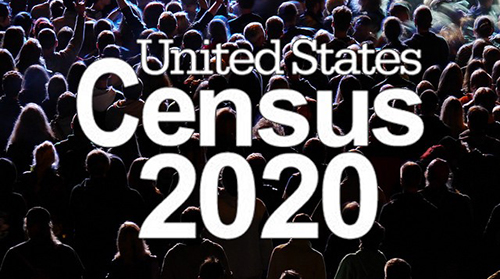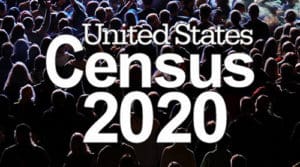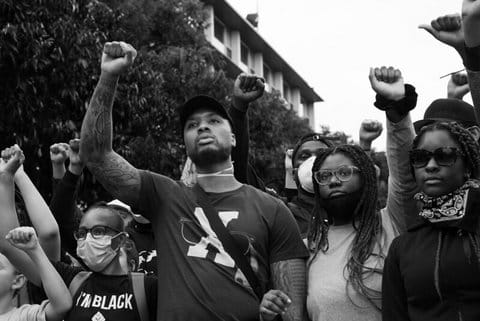
10 Apr Save 2020 Census – “Stand Up and Be Counted” Advocates Urge

By Mark Hedin, Ethnic Media Services
The best response to White House efforts to disenfranchise ethnic communities is for them to stand up and be counted in the upcoming 2020 census, a wide spectrum of experts and civil rights advocates agrees.
It’s a simple strategy to counteract the myriad of steps the Trump administration has taken to subvert an accurate count of everybody in the country – a count mandated by the constitution every 10 years through the decennial census.
“This is one of the most significant civil rights issues facing us today,” said Vanita Gupta, president and CEO of the Leadership Conference on Civil and Human Rights in a media telebriefing on April 5 hosted by major civil rights groups.
Data from the decennial count determine everything from how many congressional representatives a state gets to how much money the government allocates for schools, hospitals and transportation needs – and much more.
“Communities of color are at risk of being undercounted and left behind,” Gupta said. “The stakes are too high to remain on the sidelines.”
Cuts in funding have already disrupted efforts to improve the accuracy of the data collection. As things stand now, Gupta said, the agency will face a shortfall of $933.5 million from what it needs to keep 2020 preparations on track.
Amplifying concerns, on March 26 Commerce Secretary Wilbur Ross announced the addition of a new question about respondent’s citizenship status, despite opposition from six former Census Bureau officials, two former Commerce Secretaries and experts in the field.
The timing of Ross’ proposed question is unprecedented. It comes too late to allow the Census Bureau to conduct the careful testing it typically performs prior to making such significant changes.
“We know that adding this question on citizenship status will cause participation in the census to plummet,” Gupta said. She called the decision “deeply flawed…a failure of leadership and a capitulation to President Trump’s nativist agenda.”
“This is a tactic to scare people away from participation in the census,” said Arturo Vargas, executive director of NALEO, the National Association of Latino Elected and Appointed Officials Education Fund. “The purpose is very clear: the administration does not want Latinos to be counted.”
Vargas noted that Latinos, at almost 58 million, are the nation’s second largest population group – almost 18 percent of the total population.
“Already we had expressed our concerns about what an online census would mean to the ability of all people to be counted,” he said, referring to the 2020 census’ reliance on digital participation. Most at risk for an undercount are very young children. In 2010, an estimated 1 million very young children went uncounted, of whom 400,000 were Latino.
Marc Morial, president and CEO of the National Urban League, called the changes “a thinly veiled, back-door effort to suppress” the representation of non-white Americans in official consideration. “The prospect of an epic undercount of African Americans and all people of color in the 2020 Census is becoming more of a reality each day.”
The African American community has always been undercounted, Morial noted, starting with the 1790 Census when slaves were considered three-fifths of a person. In 2010, African Americans were undercounted by more than 2 percent, and African American children by 6.5 percent. By contrast, whites were overcounted – by 1 percent in 2000 and again by 1 percent in 2010.
Morial also noted that last month’s decision to continue what he called a “prison based gerrymandering” policy – counting prisoners where they are incarcerated rather than where they come from – will further ensure a geographic miscount.
“I have no doubt that had it been left to Census Bureau professionals, that decision would have been reversed. But when the administration came in, politics prevailed.”
John Yang, president and executive director of Asian Americans Advancing Justice, pointed out that decisions to cut the number of census workers and offices by 50 percent will undermine outreach to the very communities the census has struggled to reach in the past, and trim the followup efforts to reach those who don’t respond to the initial survey.
Asian Americans were identified by the 2010 census as the fastest growing ethnic group in the nation, increasing by 46 percent since 2000, Yang said. Some 80 percent of Asian Americans either immigrants or children of immigrants, putting them at high risk for an undercount.
Pointing to widespread fears among immigrant communities of exposing vulnerable family information, Yang emphasized that the Census bureau has the most stringent confidentiality rules of any government agency. Even that, he warned, may not be enough to ensure participation in today’s charged political climate. Responding to a reporter’s question, he agreed that the confidentiality protocols were adopted following revelations that the census during World War II helped identify Japanese Americans for internment.
“How do we explain that the best way to fight back, the best way to have a voice in policy discourse, is to be counted,” NALEO’s Vargas challenged. Noting that “there is a great amount of fear in Latino communities and in immigrant communities across the country,” Vargas said the advocates’ task now is to turn that fear into empowerment. “We will not cower in fear and not be counted…we will be the ones to defend American democracy.”
“The fight to save the census is not over, by any stretch,” Gupta said. She cited lawsuits already filed by the state of California against Ross’ proposed citizenship question, another by a group of states led by New York, and efforts by the Conference of for oversight hearings followed by legislation in Congress.
“Together we can make sure the Census is fully funded and the decision to add the question on citizenship is overturned,” she said.
Mark Hedin is a reporter with the San Francisco Study Center






No Comments